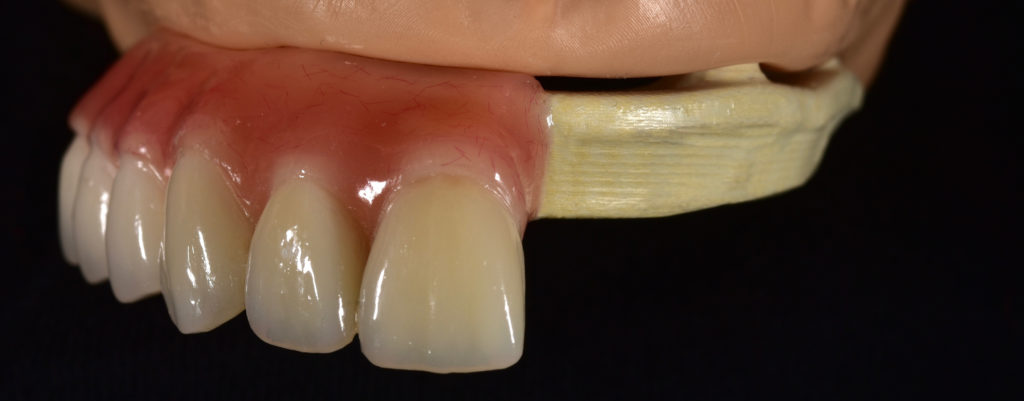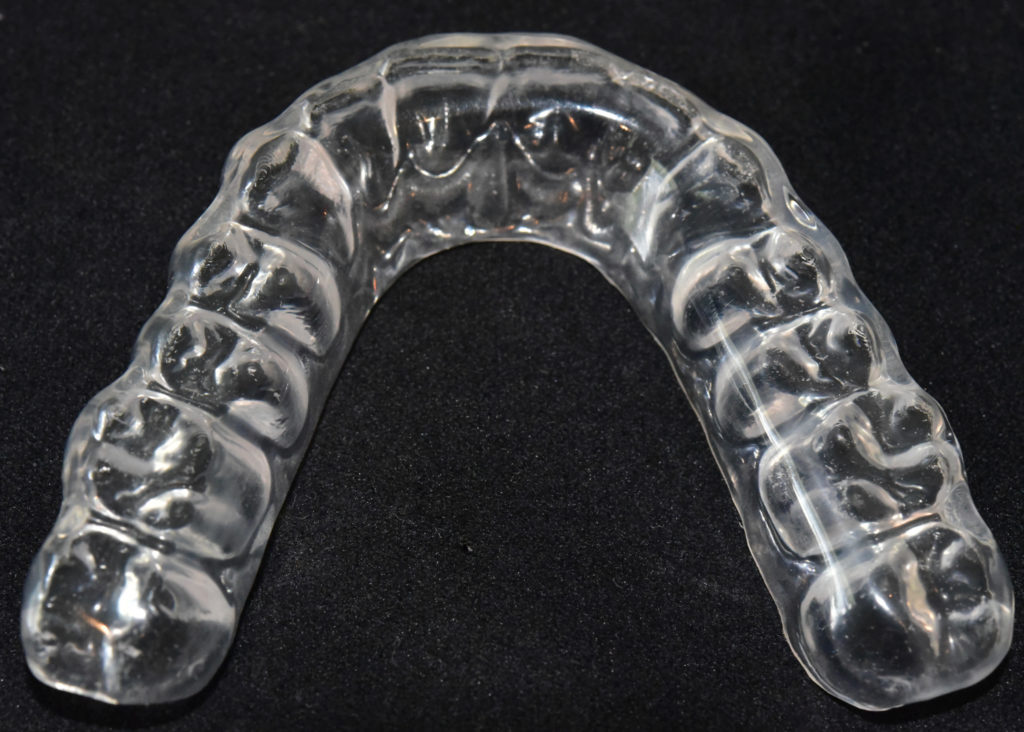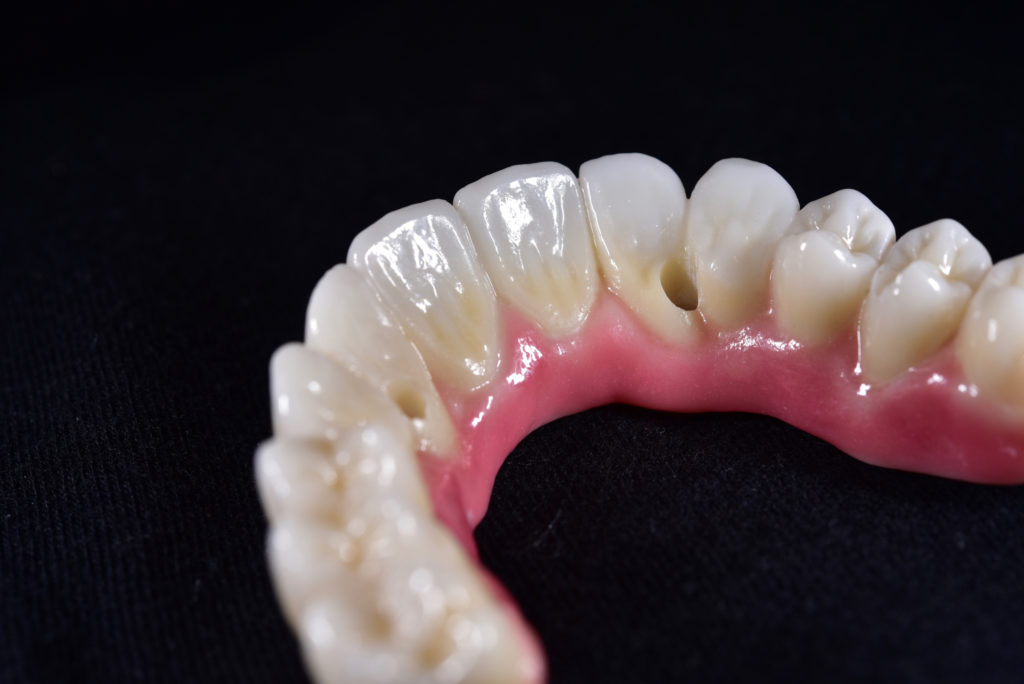Have you ever had a denture tooth fracture on an All on 4®? If you have been prescribing them long enough, the answer is definitely YES. This can feel like “defeat,” and can cause you to hesitate before prescribing this otherwise amazing solution to a future patient.
We’re here to help turn defeat into victory! Having restored 5,000 hybrids over the last 10 years, Mike and I want to share what we’ve seen from the bench in hopes of helping you strategize to avoid the loss of broken teeth. These are anecdotal, general observations that we believe will create a “win-win” for you and your patients!
Lab Observation
We routinely place hybrid denture repairs on a simple, average-value Stratos articulatorto look at occlusal forces. Most of the time, the patients are colliding on one or two teeth in a specific area, but sometimes the case is balanced, leaving us perplexed. Patients also routinely come in with teeth in hand claiming that they only ate bread!
Questions to Ponder
Have we exceeded the maximum force denture teeth can handle?
Is the opposing arch suitable for Acrylic denture teeth or do I prescribe Zirconia?
How do I prescribe a case and then ask the patient to sign a release form?
Have we exceeded the maximum force denture teeth can handle?
With the advancements in dental implants, multi-unit abutments, titanium clinical screws and new implant bar materials such as Trilor (the BioLogic Hybrid), the “weak link” is now the denture teeth.


We recommend a simple Hard Soft Splintthat will reduce fractures caused by parafunction and bruxism while sleeping.


Is the opposing arch suitable for Acrylic or Zirconia?
If the opposing arch is ideal, then “full steam ahead” with a traditional hybrid bar with denture teeth. However, if the opposing is not level, then either restore it or utilize zirconia. One or two denture repairs will cost you more in the long run than the additional cost of a Crystal Hybrid(typically an additional $1,000 per case).


How do I prescribe a treatment plan and then ask the patient to sign a release form?
It’s hard, especially if the patient detects a lack of confidence. With all medical treatments, there is a level of risk for both the prescribing doctor and the patient. There is also a trust factor that the patient has with his or her dentist. In our experience chairside, being open and honest about the risk associated with treatment is the best way to win confidence with your patient. Fortunately, we have the option of acrylicor zirconia. Most of the time, the patient will go for zirconia if presented in the right way. The release form we see being utilized is for patients who choose an acrylic. They need to be made aware that teeth will wear and the pink will discolor eventually.
All-on-4 for the Win!
We hope that you find these strategies helpful in achieving successful outcomes for your patients. As always, we are here to partner with your practice to create beautiful smiles. Please reach out and let us know if you have any questions or feedback. We look forward to working together on your next complex case!
